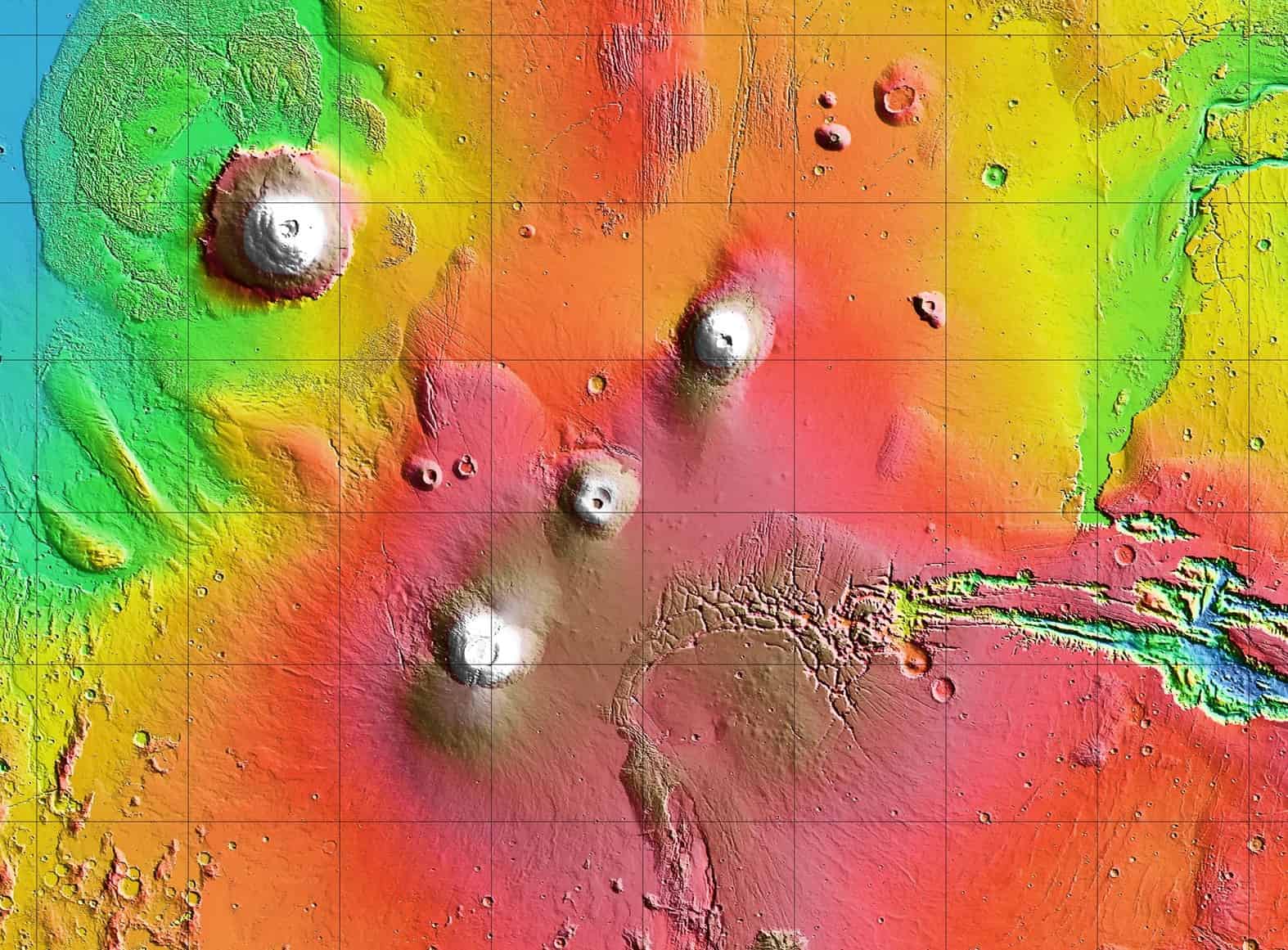MARS – In a groundbreaking observation, NASA’s Mars Odyssey spacecraft has captured an extraordinary image of Arsia Mons, one of the tallest volcanoes in the solar system, silhouetted against a backdrop of early-morning clouds.
Breaking: Unveiling Mars’ Majestic Volcanic Landscape
Just before dawn on May 2, a camera stationed 240 million kilometers from Earth recorded a scene reminiscent of Earth’s alpine vistas: clouds embracing the slopes of a massive mountain, with its summit boldly protruding above them. This mountain, however, was not of Earthly origin. It was Arsia Mons, viewed from orbit around Mars, captured by NASA’s Mars Odyssey orbiter.
The image is pioneering in its perspective: a Martian volcano seen on the horizon, towering above a sea of water ice clouds. The sight is akin to witnessing Everest pierce through Himalayan fog, yet on a planetary scale that dwarfs Earth’s greatest peaks.
Immediate Impact: A New Perspective on Mars
“We picked Arsia Mons hoping we would see the summit poke above the early morning clouds,” said Jonathon Hill of Arizona State University, who oversees operations for the orbiter’s camera. “And it didn’t disappoint.”
NASA’s 2001 Mars Odyssey orbiter captured the photo while studying the Red Planet’s atmosphere, which appears as a greenish haze. Credit: NASA/JPL-Caltech/ASU
Key Details Emerge: Mars’ Volcanic Giants
Arsia Mons stands nearly 20 kilometers tall—more than twice the height of Mauna Loa, Earth’s largest volcano from seafloor to summit. It resides in Mars’ Tharsis region, a sprawling volcanic plateau that also hosts Olympus Mons, the solar system’s tallest volcano. Together with Pavonis Mons and Ascraeus Mons, Arsia Mons forms a chain of giant volcanoes aligned along a planetary fissure.
This image is striking due to its vantage point. Rather than the typical top-down view, Odyssey rotated 90 degrees in orbit to look toward the Martian limb—the planet’s edge. This maneuver, initiated in 2023, has provided a fresh perspective despite the orbiter’s long tenure since 2001.
“We’re seeing some really significant seasonal differences in these horizon images,” said Michael D. Smith, a planetary scientist at NASA’s Goddard Space Flight Center. “It’s giving us new clues to how Mars’ atmosphere evolves over time.”
By the Numbers: Mars Odyssey’s Legacy
- Launched in 2001, Mars Odyssey is the longest-operating mission around another planet.
- Arsia Mons stands nearly 20 kilometers tall.
- The image marks the fourth “limb” observation by Odyssey.
What Comes Next: Implications for Future Exploration
Mars Odyssey has evolved from its original mission to map chemical elements and minerals on Mars to become an atmospheric observer, geologist, and now a cosmic photographer. The THEMIS camera, short for Thermal Emission Imaging System, captures both visible and infrared light, aiding scientists in locating subsurface water ice—crucial for future crewed missions, as this ice could supply water, oxygen, and even fuel.
In addition to atmospheric studies, Odyssey’s camera can image Mars’ tiny moons Phobos and Deimos and observe seasonal changes in dust and cloud formation. The image of Arsia Mons is the fourth such “limb” observation the spacecraft has made.
Background Context: Mars’ Volcanic Terrain
Arsia Mons is the southernmost of the three volcanoes that comprise Tharsis Montes. ESA’s Mars Express mission, which also studies the region, has uncovered dramatic collapse zones on Arsia Mons’ flanks. These pits, some up to 2 kilometers deep, formed as lava drained from chambers beneath the volcano, leaving behind jagged scars after collapsing under the weight of surface rock.
Expert Analysis: Understanding Mars’ Atmosphere
For scientists and engineers planning the next generation of Mars missions, these images are more than just aesthetic marvels. Understanding the planet’s weather, cloud formation, and seasonal variation can directly influence where and when future rovers—or humans—land on Mars.
The latest observations from Mars Odyssey offer invaluable insights into the Red Planet’s atmospheric dynamics, paving the way for more informed exploration strategies and potentially revealing new aspects of Martian geology.
